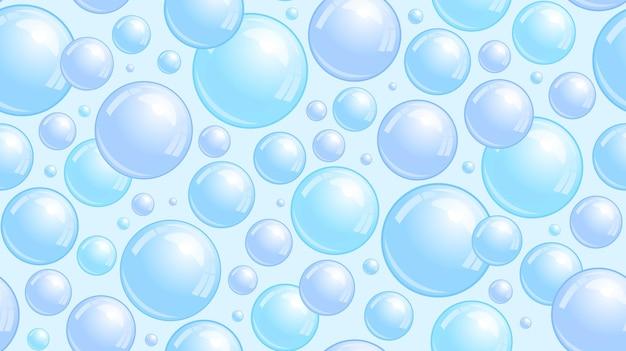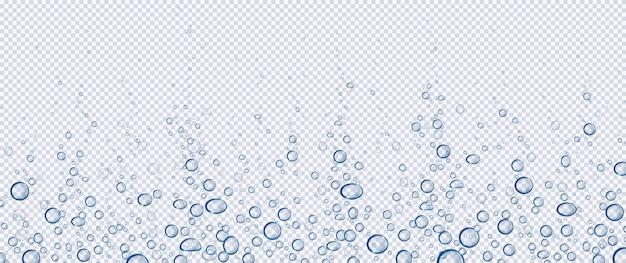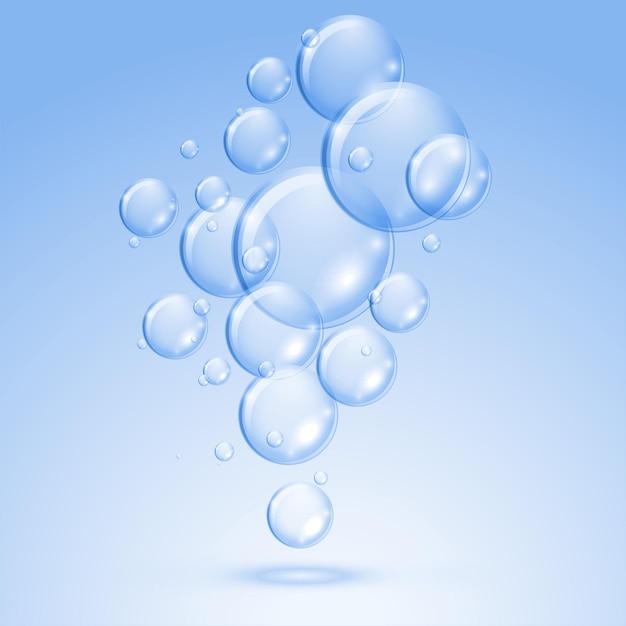Have you ever noticed a water bubble on your ceiling? It’s a common problem for homeowners. You might be wondering whether to pop the bubble or leave it alone and call a professional. If you’re in this situation, this blog post is for you!
In this comprehensive guide, we’ll discuss all the questions related to water bubbles on the ceiling, including their causes, how to fix them, and whether or not you should pop them. We’ll also cover other related questions, like what happens if you pop a water bubble and what to do when there is a water bubble in the ceiling.
Whether you have a bubble ceiling in your bathroom or any other room, we’ve got you covered. We’ll provide you with practical tips and tricks on how to fix a bubble in the ceiling, so you can rest assured that your ceiling is in good condition.
So, sit back, relax, and let’s dive into the world of water bubbles on the ceiling. By the end of this blog post, you’ll be empowered with the knowledge you need to make an informed decision on whether you should pop a water bubble in your ceiling or not.
Should You Pop a Water Bubble in Ceiling
If you’re living in a house or apartment with a ceiling, you’ve probably noticed water bubbles appearing there from time to time. These bubbles indicate a leaky roof or plumbing system, which is bad news for your home and should be remedied as soon as possible. But what should you do with the water bubble in your ceiling? Should you pop it or leave it alone? Here is everything you need to know.
The Pros of Popping a Water Bubble in Ceiling
The primary reason why you might want to pop a water bubble in the ceiling is that it can relieve the pressure build-up, preventing the ceiling from collapsing. Furthermore, it can allow for faster drying, which is necessary to prevent mold and mildew growth. If you can’t wait for a professional to come to your place to repair the problem, you could drill a hole in the center of the bulge to allow the water to drip into a bucket. This can make the problem more manageable until a professional can come to repair it.
The Cons of Popping a Water Bubble in Ceiling
On the other hand, there are also some serious downsides to popping a water bubble in the ceiling. First of all, the water inside the bulge can be filthy, contaminated, or even contain hazardous materials such as asbestos or lead. When you pop it, you risk exposing yourself to harmful substances that can cause health problems. Additionally, popping the bubble can cause the water to spread over a wider area and damage the ceiling or even the walls.
When to Call a Professional
If you’re not sure whether to pop the water bubble or not, It’s always best to call a professional. Water damage restoration companies have the equipment and expertise to deal with ceiling water damages. They know how to handle contaminated water, repair the leak, and restore the ceiling to its original state. Furthermore, if you’re living in a rental property, you should contact your landlord or property manager to address the issue.
Prevention is Key
Preventing water damage in the ceiling is much easier than dealing with the mess after it happens. Regular inspection of the roof and plumbing system can help you detect potential leaks before they cause any problem. Moreover, fixing the leaks as soon as you notice them can save you a lot of money, time, and headaches in the long run.
In conclusion, popping a water bubble in the ceiling can have both positives and negatives. It’s essential to weigh the pros and cons carefully before making any decisions. If you’re feeling uncertain or uncomfortable, the best course of action is to call a professional water damage restoration company who can help you tackle the issue safely and effectively.
Bubble Ceiling: What You Need to Know
If you’re a homeowner, you may have had to deal with bubble ceilings. Bubble ceilings occur when there is excess moisture that gets trapped between the paint and the ceiling surface, causing the paint to bubble and peel. In this article, we’ll be discussing what causes bubble ceilings, how to identify them, and how to prevent them.
What Causes Bubble Ceilings
There are several factors that can cause bubble ceilings, including water leaks, high humidity, and improper ventilation. When water leaks from the roof or plumbing and seeps through the ceiling, it can cause the paint to bubble and peel. High humidity can also cause moisture buildup in the ceiling, leading to bubble ceilings. If there isn’t proper ventilation in your home, the moisture will accumulate, causing the paint to bubble.
How Can You Identify Bubble Ceilings
Bubble ceilings are not hard to spot. The first sign of a bubble ceiling is when you notice the paint starting to bubble and peel off. Another sign is if you see water stains or discoloration on the ceiling, which can be an indication of a water leak. If left untreated, bubble ceilings can worsen and lead to structural damage to your home.
How Can You Prevent Bubble Ceilings
Preventing bubble ceilings is fairly simple. The first step is to identify the source of the excess moisture and fix it. If there is a water leak, it needs to be fixed immediately. Proper ventilation is also important in preventing bubble ceilings. Make sure your home is well-ventilated by opening windows or installing fans. Using a dehumidifier can also aid in reducing excess moisture in the air.
In conclusion, bubble ceilings can be easily prevented and fixed if dealt with on time. Regular maintenance checks and proper ventilation can help keep excess moisture at bay and prevent the paint from bubbling and peeling. If you notice signs of a bubble ceiling, it’s important to act fast and fix the issue to avoid structural damage to your home.
How to Fix a Bubble in Your Ceiling
Have you ever noticed a bubble in your ceiling and wondered how to fix it? Don’t worry; it’s a common problem that can be quickly remedied. In this section, we’ll guide you through the process of fixing a bubble in your ceiling.
Step 1: Identify the Cause
Before you start fixing the bubble, you need to identify the cause. Bubbles can form due to water damage, moisture, or poor ventilation. If the cause is due to water damage, you must fix the underlying issue to prevent further damage.
Step 2: Prepare the Area
Next, clear the area around the bubble. Cover the area with a drop cloth, wear gloves, and protective eyewear before proceeding. You’ll need a few things to fix the bubble, such as a utility knife, a putty knife, sandpaper, and joint compound.
Step 3: Cut and Remove the Bubble
Using a utility knife, make a small cut in the middle of the bubble. Be careful not to cut too deep as you don’t want to damage the surrounding area. Once you’ve made the incision, use a putty knife to remove the bubble gently.
Step 4: Sand and Apply Joint Compound
Now, sand down the area around the bubble until it’s smooth and even. Then, apply joint compound to the area with a putty knife. You might need to repeat the process a few times throughout the day, letting the joint compound dry between each application, to ensure a smooth finish.
Step 5: Paint the Ceiling
Once the joint compound has dried completely, paint the ceiling to match the rest of the room. Painting might take a few hours to dry completely, depending on the paint you use. Once the paint is dry, voila! Your ceiling is fixed!
In conclusion, fixing a bubble in your ceiling might seem daunting, but it’s a simple DIY job you can do with the right tools and a bit of time. Remember to fix the underlying cause, prepare the area, cut and remove the bubble, sand and apply joint compound, and paint the ceiling. With this guide, you’ll have your ceiling looking as good as new in no time!
Bubble on Ceiling, but No Water
If you spot a bubble on your ceiling, but it’s not caused by water, you might be wondering what caused it. There are several reasons why bubbles form on the ceiling, and in this section, we’ll explore some of the most common ones.
Paint Bubbles
One of the most common causes of bubbles on the ceiling is paint bubbles. When paint is applied to the ceiling, it can trap air between the paint and the surface. Over time, the air expands and creates a bubble. This can happen if the paint is applied too thickly or if the surface is not properly prepared before painting.
Drywall Bubbles
Another possible cause of bubbles on the ceiling is drywall bubbles. This occurs when the drywall isn’t properly secured to the ceiling joists, causing it to shift and creating a space between the drywall and the ceiling. The air can then get trapped in this space and create a bubble.
Humidity Bubbles
High levels of humidity can also cause bubbles to form on ceilings. Humidity can cause the paint or wallpaper to peel away from the surface, creating a bubble. This is especially common in bathrooms and kitchens, where high humidity levels are common.
What Should You Do
If you notice a bubble on your ceiling, it’s important to determine the cause before attempting to fix it. If it’s a paint or drywall bubble, you may need to consult a professional to fix the underlying issue. If it’s a humidity bubble, you may need to invest in a dehumidifier or improve the ventilation in your home to prevent future bubbles from forming.
In summary, bubbles on the ceiling can be caused by a variety of factors. By understanding the most common causes, you can take steps to prevent and fix these issues if they occur.
Water Bubbles on Bathroom Ceiling
If you’ve noticed water bubbles on your bathroom ceiling, you might be wondering what causes them and what you should do about them. Here’s what you need to know.
Why Do Water Bubbles Form on Bathroom Ceilings
Water bubbles on bathroom ceilings are usually a sign of a leak somewhere in your bathroom. The most common causes of leaks are a faulty bathroom fitting, such as a shower or faucet, or a damaged or blocked drainage pipe.
When water leaks from a fitting or a pipe, it can collect on your ceiling and form bubbles. The bubbles are caused by the water pushing against the paint or plaster on your ceiling and creating a pocket of air.
Can You Ignore Water Bubbles on Bathroom Ceilings
No! Although water bubbles might seem harmless, they can actually be a sign of a bigger problem. If you ignore the bubbles, the water could eventually cause your ceiling to collapse, leading to expensive repairs.
Additionally, a water leak can also create dampness, which can lead to mold growth. Mold can cause health problems, particularly in people with asthma or allergies.
How Can You Fix Water Bubbles on Bathroom Ceilings
The best way to fix water bubbles on your bathroom ceiling is to find and fix the root cause of the problem – the leak. If you’re not confident with DIY, it’s usually best to call a plumber or a professional handyman to take a look.
Once the leak has been fixed, you should paint the affected area with a damp resistant paint, which will help to prevent the problem from recurring.
If you notice water bubbles on your bathroom ceiling, it’s important to take action as soon as possible. Ignoring them could lead to costly and potentially dangerous consequences. Find and fix the source of the leak, and make sure to use damp-resistant paint to prevent future problems.
What Causes Water Bubbles in Your Ceiling
Water bubbles on the ceiling are a common sight in many homes. It’s often an indication that something is wrong with your ceiling. Here are some of the common causes of water bubbles in your ceiling.
Leaking Roof
When your roof starts leaking, water can penetrate through the roof and seep into your ceiling. This causes the creation of water bubbles on your ceiling. The leak may not always be obvious, and you may need to hire a professional to detect where the water is coming from.
Plumbing Issues
Your plumbing system can also be a culprit of water bubbles on your ceiling. A leaking pipe or a burst pipe can cause water to seep through your ceiling, creating bubbles in the process. If you suspect a plumbing issue, it’s important to address it as soon as possible to prevent further damage.
Condensation
If your home has poor ventilation or insulation, it can cause condensation to form on your ceiling. Condensation occurs when warm air meets a cold surface, and it can cause the ceiling to appear damp and form water bubbles. Properly insulating your home and improving ventilation can help prevent condensation.
HVAC issues
Your heating, ventilation, and air conditioning system can sometimes cause water bubbles in your ceiling. If the AC coil is dirty and clogged, it can cause water to drip onto your ceiling. Routine maintenance of your HVAC system can prevent these issues from occurring.
Water bubbles on your ceiling can be a sign of a bigger problem. Knowing the causes can help you identify the issue and take the necessary steps to fix it. If unsure, always seek the help of a professional to prevent further damage to your home.
Should I Pop a Water Bubble in Paint
If you’ve noticed a water bubble forming in your painted wall, you might be tempted to pop it to get rid of the unsightly bump. However, before you grab a needle or a pin and start poking, it’s essential to know whether this is a good idea or a bad one.
Is it Safe to Pop a Water Bubble in Paint
In most situations, it’s not recommended to pop a water bubble in paint, especially if it’s a large bubble. Popping the bubble can cause the paint to chip or peel, potentially damaging the wall further. In addition, if the water is coming from a leak, popping the bubble could worsen the problem.
What Causes Water Bubbles in Paint
Water bubbles in paint are usually caused by moisture getting trapped underneath the surface. This can be due to a variety of issues, including water leaks, high humidity levels, or improper surface preparation before painting.
How to Fix a Water Bubble in Paint
Instead of popping the bubble, it’s better to address the underlying issue causing it. If the bubble is due to a water leak, you’ll need to fix the leak first before repairing the paint. Once the leak is fixed, wait for the surface to dry completely. Then, sand the affected area lightly with fine-grit sandpaper and apply a layer of oil-based primer. Once the primer dries, you can repaint the area with the original color.
Preventing Water Bubbles in Paint
To prevent water bubbles from forming in paint, it’s essential to address any moisture issues before painting. Check for leaks and fix them promptly. Make sure the surface is clean, dry, and free of any contaminants before painting. If you live in a humid area, consider using a dehumidifier to decrease the humidity levels inside your home.
While it may be tempting to pop a water bubble in paint, it’s not the best solution. Instead, address the underlying issue causing the bubble and follow the proper steps to repair the damage. Remember, prevention is key, so take the necessary steps to prevent water bubbles from forming in the first place.
Should I Pop a Water Bubble on My Wall
Water bubbles can sometimes appear on our walls, especially after heavy rainfall or water damage. They can be tempting to pop, but the question is, should you pop them?
What Causes Water Bubbles on Walls
Water bubbles on walls are caused by trapped moisture, usually from water damage. Water can seep into the walls through leaks, floods, or excess humidity in the air. When this water gets trapped between layers of paint or wallpaper, it creates a bubble.
The Dangers of Popping Water Bubbles
Popping water bubbles on your wall might seem like a quick fix, but it can actually cause more damage than good. If there is still moisture trapped behind the bubble, puncturing it can release that moisture, leading to more extensive and expensive damage down the line.
Additionally, if the water damage is extensive, there may be mold or mildew growing under the surface, which can be released into the air when you pop the bubble. This can lead to respiratory problems or allergic reactions.
When to Call a Professional
If you notice water bubbles on your wall, it is best to call a professional to assess the damage. They can accurately diagnose the problem and recommend the best course of action, which may include drying out the area, removing the bubble and repairing the affected area. By properly addressing the issue, you can prevent further damage and ensure your wall is safe and sound.
In conclusion, popping a water bubble on your wall is not recommended. It is best to call a professional to assess the damage and recommend the best course of action. Remember, prevention is the best cure, so it is essential to fix any water damage as soon as possible to prevent the development of water bubbles on your wall.
What happens if you pop a water bubble
So, you’re staring at that big, bulging water bubble on your ceiling and you’re wondering whether it’s safe to pop it or not. Well, the answer is not straightforward, because it depends on a few factors. Let’s take a closer look at what happens if you decide to pop a water bubble.
The Size of the Bubble Matters
One of the critical factors that determine what happens when you pop a water bubble is its size. If the bubble is relatively small, less than two inches in diameter, then it’s probably safe to pop. However, if it’s more significant than two inches, popping it could lead to more significant problems.
Popping the Bubble can Cause More Damage to Your Ceiling
If the water bubble is the result of a leak from a water pipe, then popping it could cause more harm to your ceiling. When you puncture the bubble, the water that’s held inside can spill out, running down the walls and soaking your carpet. This can lead to more significant damage to your ceiling, which could end up costing you more money in repairs.
Mold Growth
Puncturing a water bubble in your ceiling can also lead to mold growth. If the water has been sitting inside the bubble for a while, there is a high chance that mold has already started growing. When you pop the bubble, the mold spores can easily spread all over your house, causing more health problems.
Uncovering the Root Cause of Your Water Bubble
Before you decide to pop the bubble, you must first discover the root cause of your water bubble. If it’s caused by a leaky roof or a broken pipe, then popping the bubble isn’t a permanent solution. You must fix the underlying problem first; otherwise, the bubble will keep coming back.
In conclusion, popping a water bubble on your ceiling is not always the best solution. It’s always wise to weigh the benefits versus the risks of popping a water bubble before making a decision. When in doubt, always call a professional to fix the problem.
What to do when there’s water bubble in the ceiling
So, you’ve noticed a water bubble in your ceiling, and you’re not sure what to do. Don’t worry; we’ve got you covered! Follow these steps to solve the problem and prevent it from happening again.
Identify the source of the problem
The first step is to find out where the water is coming from. It could be a leaky pipe or a damaged roof. If you’re not sure, call a professional to inspect your home and identify the source of the problem.
Drain the bubble
If the bubble is small, you can drain it yourself. Use a needle or a sharp object to poke a small hole in the bubble, and let the water drain out. Be sure to place a bucket or a towel beneath the bubble to catch the water.
Dry the area
After draining the bubble, use a dry towel to soak up any remaining water. You can also use a fan or a dehumidifier to dry the area faster.
Repair the source of the problem
Once you’ve drained the bubble and dried the area, it’s time to fix the source of the problem. If it’s a leaky pipe, call a plumber to fix it. If it’s a damaged roof, call a roofer to repair it.
Prevent it from happening again
To prevent water bubbles from forming in the future, make sure to regularly inspect your home for any leaks or damages. Repair any issues as soon as possible to avoid further damage.
Now that you know what to do when there’s a water bubble in the ceiling, don’t panic when you see one. Follow these steps and solve the problem like a pro!



